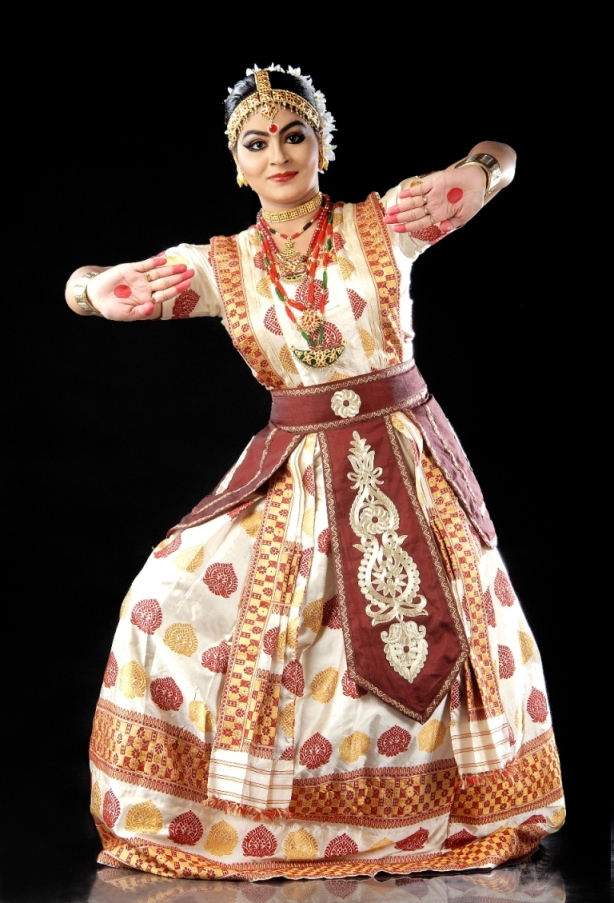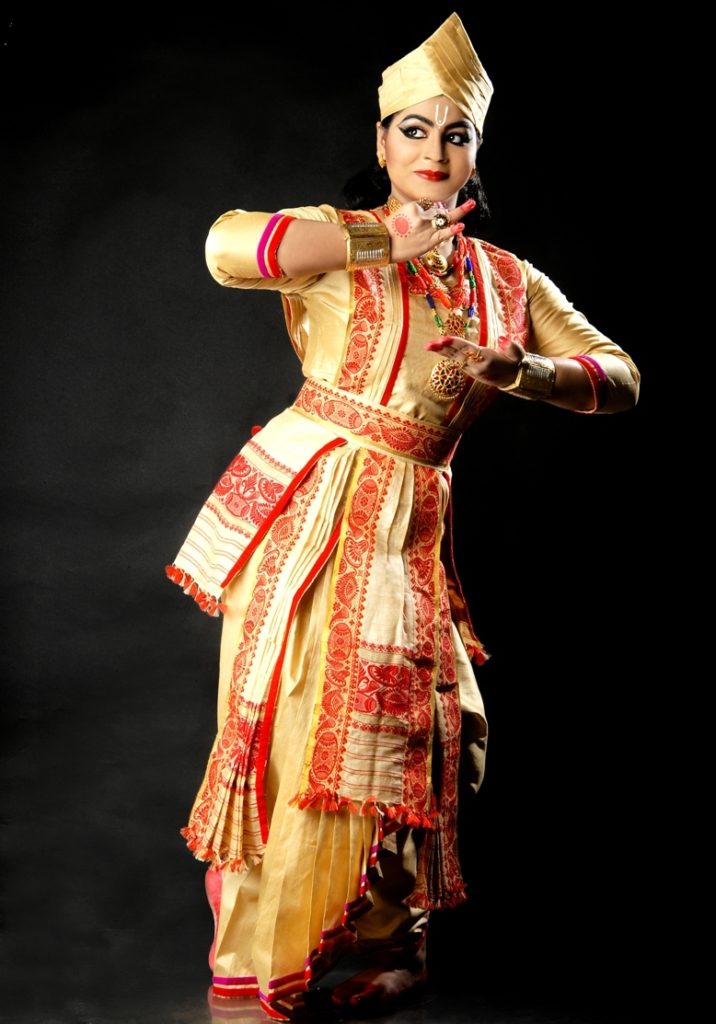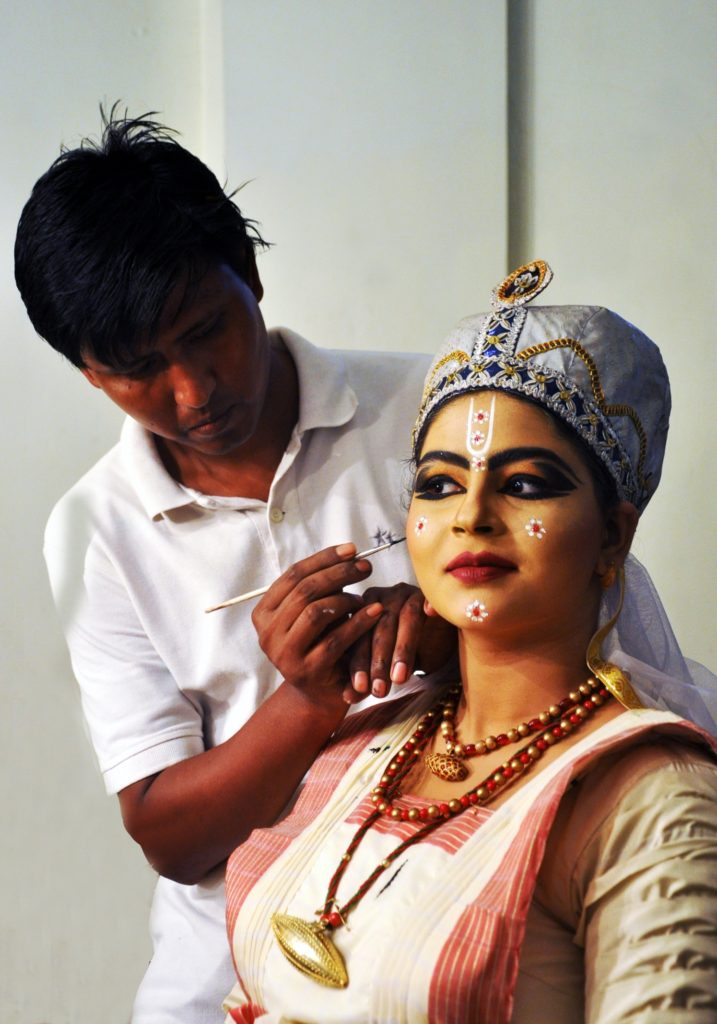Sattriya Dance costume
The costume of Sattriya dance is primarily of two types: the male costume comprising the dhoti and chadar and the paguri ( turban) and the female costume comprising the ghuri, chadar and kanchi (waist cloth). Traditionally the costumes were of white or raw silk color with use of red, blue and yellow for specific dance numbers. In earlier times velvet and satin materials were mostly used for the costumes. With change of time, as this dance form evolved from the sattras onto stage, the design and materials of the dance costumes changed. Pat (also spelled paat) – a silk produced in Assam which is derived from the mulberry plant and muga ( golden silk of Assam) is also used in preparing the dance costume. Other brilliant colours are also used in the female costumes. These hand-woven materials normally have intricate local motifs like Kingkhap, Miri Motif, Kolka etc
Uses of play-specific costumes are also seen in Sattriya dance. The dress of Krishna Nritya and Nadubhangi Nritya is of yellow and blue keeping in line with the attire of Lord Krishna. The Sutradhar Nritya also has its specific white costume with a special turban.

Sattriya dance female costume made of Assam Pat silk and traditional Assamese jewellery: Kopali on the forehead, Muthi Kharu (bracelets), Thuka Suna (earrings) and Golpata, Lokaparo, Senpota and Bena (necklaces).
Traditional Assamese jewellery is used in Sattriya dance. The jewelleries are made in a unique technique in Kesa Sun ( raw gold). Artists wear Kopali on the forehead, Muthi Kharu and Gam Kharu (bracelets), different type of neck pieces like Mata Moni (for male dancers), Golpata, Dhulbiri (shaped like the musical instrument dhol), Bena (pendant shaped like a crescent), Jethipata (lizard shaped), Dugdugi (leaf shaped), Senpata (eagle shaped), Dhansira (strand of rice grain), Lokaparo (pegion design). Earrings are made in similar designs and also Thuka Suna and Keru are worn by dancers. Female dancers wear white flowers in the hair.
The costumes of Ankiya Naats (dramas) are colourful and character specific. Use of Mukha (Masks) to depicts demons and special characters are also unique of this dance form. The art of mask making is an integral part of Sattriya culture and originated in the Sattras of Assam. Beautifully decorated turbans and crowns made by the local artisans are used in the Ankiya Naats.
The facial makeup of Sattriya dance resembles other classical dance forms of India. However in earlier times traditional materials and herbs were used for make up.

The male costume

Traditional makeup of The Sutradhar
